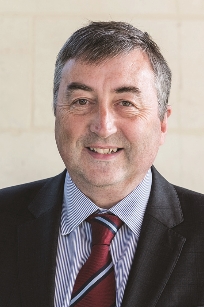NHS reviews finance framework in 10-year plan development
Details of the working groups emerged in the summer, and NHS Improvement confirmed it had delayed publication of the tariff engagement document for 2019 and beyond. It said that following the five-year funding settlement announced in July, it was essential that tariff and pricing proposals were aligned with the long-term plan for the NHS.
Further engagement will take place over the coming months, but the tariff proposals will be published later in the year alongside the 10-year plan and 2019/20 planning guidance.
Ms O’Mahony leads two of the working groups – on funding and financial architecture, and capital and infrastructure. She told Healthcare Finance the former would look at the tariff, including the marginal rate emergency tariff. It would also consider other elements of funding flows. These included CQUIN, readmissions and material financial aspects of the standard contract, as well as control totals.
There are 17 working groups, including those being led by Ms O’Mahony, but she said they could not work in isolation. A change in one area might have a knock-on effect in another – they must not be rushed, and stakeholders should be involved in considering proposals at the earliest stage possible. ‘We have to be careful,’ she said. ‘A substantial shift in the financial architecture at the same time as the NHS is reforming could destabilise the position.
‘We need to simplify the financial framework and change some of the levers that are now out of date. While we do this, however, we need to understand how the changes will impact commissioners, providers and systems.’
NHS Improvement chief executive Ian Dalton said providers would play a key role in the working groups.
 ‘It’s a personal intent of mine that we make sure the provider sector that has to deliver the plan is strongly built into this,’ he said. ‘The workstreams will be the first step in what will need to be a significant engagement process.’
‘It’s a personal intent of mine that we make sure the provider sector that has to deliver the plan is strongly built into this,’ he said. ‘The workstreams will be the first step in what will need to be a significant engagement process.’
The NHS Confederation welcomed suggestions that the payment regime would be reformed, but it added that any payment changes must encourage place-based care and reward care in the community.
The Community Network, which has been established by NHS Providers and the NHS Confederation, said the 10-year plan must put community services ‘front and centre’ of improving care for the public.
In a letter to NHS England and NHS Improvement, Community Network chair Matthew Winn said the acceleration of integration and the spread of a community-based model to manage population health and care must be key priorities.
‘Ultimately, we need to do something different,’ he said. ‘The community-based approach adopted by a number of vanguard projects and wider integration projects across the country has proven to be successful. As the National Audit Office has reported, these models achieved a slower growth rate of hospital emergency admissions.’
Working groups
Life course programmes• Prevention and personal responsibility
• Healthy childhood and maternal health
• Integrated and personalised care for people with long-term conditions and the frail elderly (including dementia)
Clinical priorities
• Cancer
• Cardiovascular and respiratory
• Learning disability and autism
• Mental health
Enablers
• Workforce, training and leadership
• Digital and technology
• Primary care
• Research and innovation
• Clinical review of standards
• Engagement
• Funding and financial architecture
• Capital and infrastructure
• Efficiency and productivity
• Local and national system architecture
Related content
The Institute’s annual costing conference provides the NHS with the latest developments and guidance in NHS costing.
The value masterclass shares examples of organisations and systems that have pursued a value-driven approach and the results they have achieved.